PROPERTY FROM AN IMPORTANT INTERNATIONAL PRIVATE COLLECTION Willem de Kooning Study for Seated Woman 1946-48 pencil on cardboard 11 x 9 1/2 in. (27.9 x 24.1 cm.)
Provenance Gifted by the artist to Elaine de Kooning New York Acquired from the above by the present owner Exhibited Bridgehampton, New York, Mark Borghi Fine Art, Willem de Kooning A Retrospective Featuring 35 Works from 1936 - 1978, July 2 - July 22, 2011 Munich, Galerie Thomas, Ernst Ludwig Kirchner & Willem de Kooning Drawings: The Expressionist Line, September 14 - November 3, 2012 Berlin, Akim Monet GmbH, Side by Side Gallery, The Aggressive Line: Seminal Drawings of Women - de Kooning, E. L. Kirchner, January 18 - March 9, 2013 Literature T. B. Hess, Willem de Kooning Braziller, 1959, no. 94, n.n. (illustrated) S. Yard, Willem de Kooning The First Twenty-six Years in New York, 1986, no. 246, n.n. (illustrated) Ernst Ludwig Kirchner & Willem de Kooning Drawings: The Expressionist Line, exh. cat., Galerie Thomas, Munich, 2012, plate 8 (cover illustration) The Aggressive Line: Seminal Drawings of Women - de Kooning, E. L. Kirchner, exh. cat., Akim Monet GmbH, Side by Side Gallery, Berlin, 2013, p. 8 (cover illustration) Catalogue Essay “ To make a small painting look big is very difficult, but to make a big painting look small is also very difficult.” WILLEM de KOONING 1972 De Kooning’s 2011 retrospective at the Museum of Modern Art illustrated his career’s trajectory to a degree never before achieved with any other exhibition. One of the lasting benefits of that superb show was the dizzying display of de Kooning’s three essential qualities as an artist: the first was his steady prolifcacy, showcased in the exhibition’s tiny sampling of an astoundingly large oeuvre. The next was his ability to thwart the confines of category, as his many paintings refused to fall into stylistic boxes. The final quality, and that which we glance with such touching intimacy in the present lot, was de Kooning’s near-parental relationship to his subjects. In Study for Seated Woman, 1946-1948, de Kooning grants us a first look at his legendary Woman—a sonogram of his brainchild. De Kooning spent much of the early part of the 1940s—during his mid-thirties— abstracting subjects that he had first painted in the 1930s. Household items and seated men, among others, all received an Expressionist makeover, displaying elegant lines along with ripened color that propelled them out of the realm of realism: “The late 1940s was when de Kooning first caught fire, when abstraction and figures first merged… from painting to painting, the single seated figure in the series grows less naturalistic, begins to lose its contours, to dissolve into its surroundings.” (H. Cotter, “De Kooning—A Retrospective’ at MoMA—Review”, The New York Times, September 15, 2011). Yet de Kooning’s body of work was immature until he found his most prized subject. De Kooning had married Elaine Fried in 1938, and he began experimenting with her shape in the mid-1940s. De Kooning, intentionally or not, suddenly found himself hearkening back to the habits of the Impressionists in his work— portraying the female subject in a series of intimate poses. The present lot, Study for Seated Woman, 1946-1948, reveals a female subject reclining on a chair; her right arm is raised and curved behind her head, while her left arm stretches outwards. Her parted knees are each distinct, one angular and rigorously executed with thick black lines, while the left knee is barely rendered in wispy strokes. Study for Seated Woman, 1946-1948, comes in de Kooning’s first wave of women paintings, a precursor to the full-fledged canvases of the early 1950s. What is remarkable about the present lot, other than its astounding formative value with regard to the creation of the later paintings, is de Kooning’s multitude of influences coming through in its shapes and lines. Like many other Abstract Expressionist artists of the 1940s, de Kooning worked hard to shake the overwhelming influence of Picasso in his paintings, yet we can clearly see snippets of cubist origin in the de Kooning’s mask-work. The triangular
PROPERTY FROM AN IMPORTANT INTERNATIONAL PRIVATE COLLECTION Willem de Kooning Study for Seated Woman 1946-48 pencil on cardboard 11 x 9 1/2 in. (27.9 x 24.1 cm.)
Provenance Gifted by the artist to Elaine de Kooning New York Acquired from the above by the present owner Exhibited Bridgehampton, New York, Mark Borghi Fine Art, Willem de Kooning A Retrospective Featuring 35 Works from 1936 - 1978, July 2 - July 22, 2011 Munich, Galerie Thomas, Ernst Ludwig Kirchner & Willem de Kooning Drawings: The Expressionist Line, September 14 - November 3, 2012 Berlin, Akim Monet GmbH, Side by Side Gallery, The Aggressive Line: Seminal Drawings of Women - de Kooning, E. L. Kirchner, January 18 - March 9, 2013 Literature T. B. Hess, Willem de Kooning Braziller, 1959, no. 94, n.n. (illustrated) S. Yard, Willem de Kooning The First Twenty-six Years in New York, 1986, no. 246, n.n. (illustrated) Ernst Ludwig Kirchner & Willem de Kooning Drawings: The Expressionist Line, exh. cat., Galerie Thomas, Munich, 2012, plate 8 (cover illustration) The Aggressive Line: Seminal Drawings of Women - de Kooning, E. L. Kirchner, exh. cat., Akim Monet GmbH, Side by Side Gallery, Berlin, 2013, p. 8 (cover illustration) Catalogue Essay “ To make a small painting look big is very difficult, but to make a big painting look small is also very difficult.” WILLEM de KOONING 1972 De Kooning’s 2011 retrospective at the Museum of Modern Art illustrated his career’s trajectory to a degree never before achieved with any other exhibition. One of the lasting benefits of that superb show was the dizzying display of de Kooning’s three essential qualities as an artist: the first was his steady prolifcacy, showcased in the exhibition’s tiny sampling of an astoundingly large oeuvre. The next was his ability to thwart the confines of category, as his many paintings refused to fall into stylistic boxes. The final quality, and that which we glance with such touching intimacy in the present lot, was de Kooning’s near-parental relationship to his subjects. In Study for Seated Woman, 1946-1948, de Kooning grants us a first look at his legendary Woman—a sonogram of his brainchild. De Kooning spent much of the early part of the 1940s—during his mid-thirties— abstracting subjects that he had first painted in the 1930s. Household items and seated men, among others, all received an Expressionist makeover, displaying elegant lines along with ripened color that propelled them out of the realm of realism: “The late 1940s was when de Kooning first caught fire, when abstraction and figures first merged… from painting to painting, the single seated figure in the series grows less naturalistic, begins to lose its contours, to dissolve into its surroundings.” (H. Cotter, “De Kooning—A Retrospective’ at MoMA—Review”, The New York Times, September 15, 2011). Yet de Kooning’s body of work was immature until he found his most prized subject. De Kooning had married Elaine Fried in 1938, and he began experimenting with her shape in the mid-1940s. De Kooning, intentionally or not, suddenly found himself hearkening back to the habits of the Impressionists in his work— portraying the female subject in a series of intimate poses. The present lot, Study for Seated Woman, 1946-1948, reveals a female subject reclining on a chair; her right arm is raised and curved behind her head, while her left arm stretches outwards. Her parted knees are each distinct, one angular and rigorously executed with thick black lines, while the left knee is barely rendered in wispy strokes. Study for Seated Woman, 1946-1948, comes in de Kooning’s first wave of women paintings, a precursor to the full-fledged canvases of the early 1950s. What is remarkable about the present lot, other than its astounding formative value with regard to the creation of the later paintings, is de Kooning’s multitude of influences coming through in its shapes and lines. Like many other Abstract Expressionist artists of the 1940s, de Kooning worked hard to shake the overwhelming influence of Picasso in his paintings, yet we can clearly see snippets of cubist origin in the de Kooning’s mask-work. The triangular


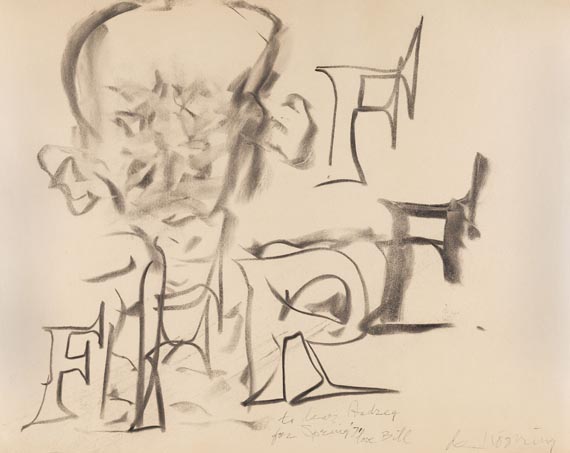

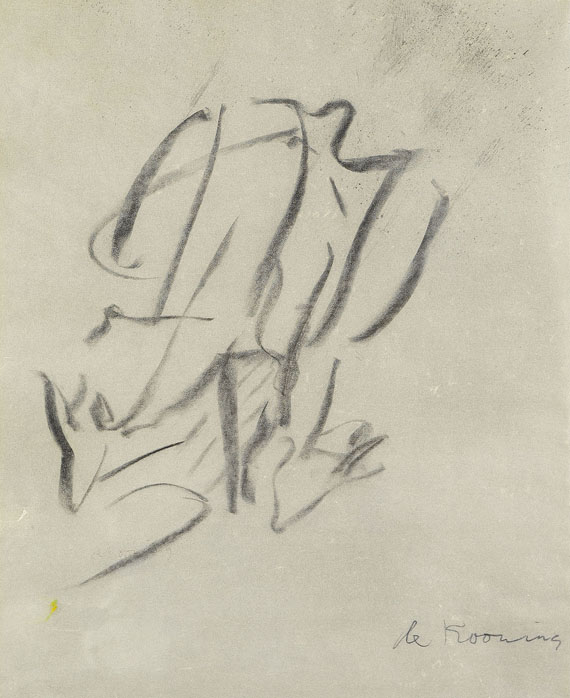

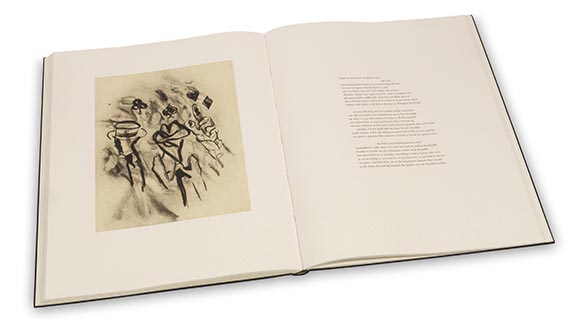
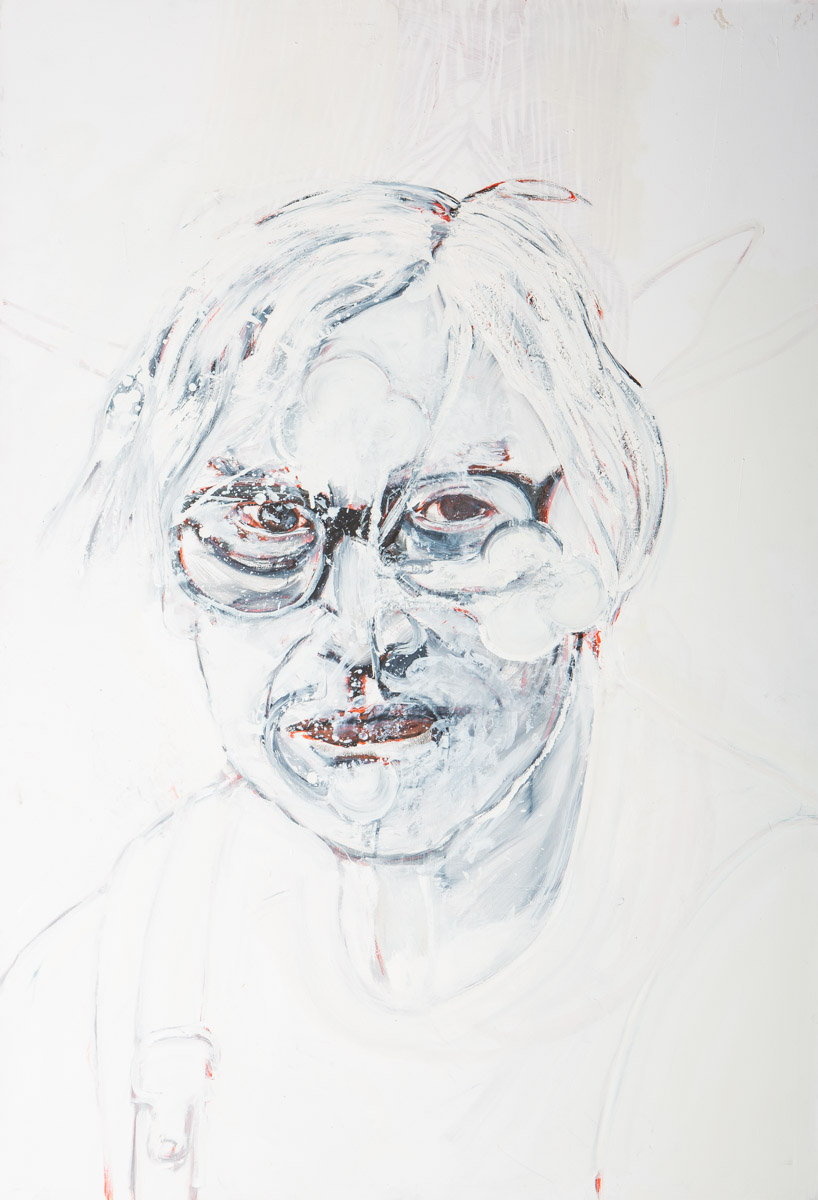



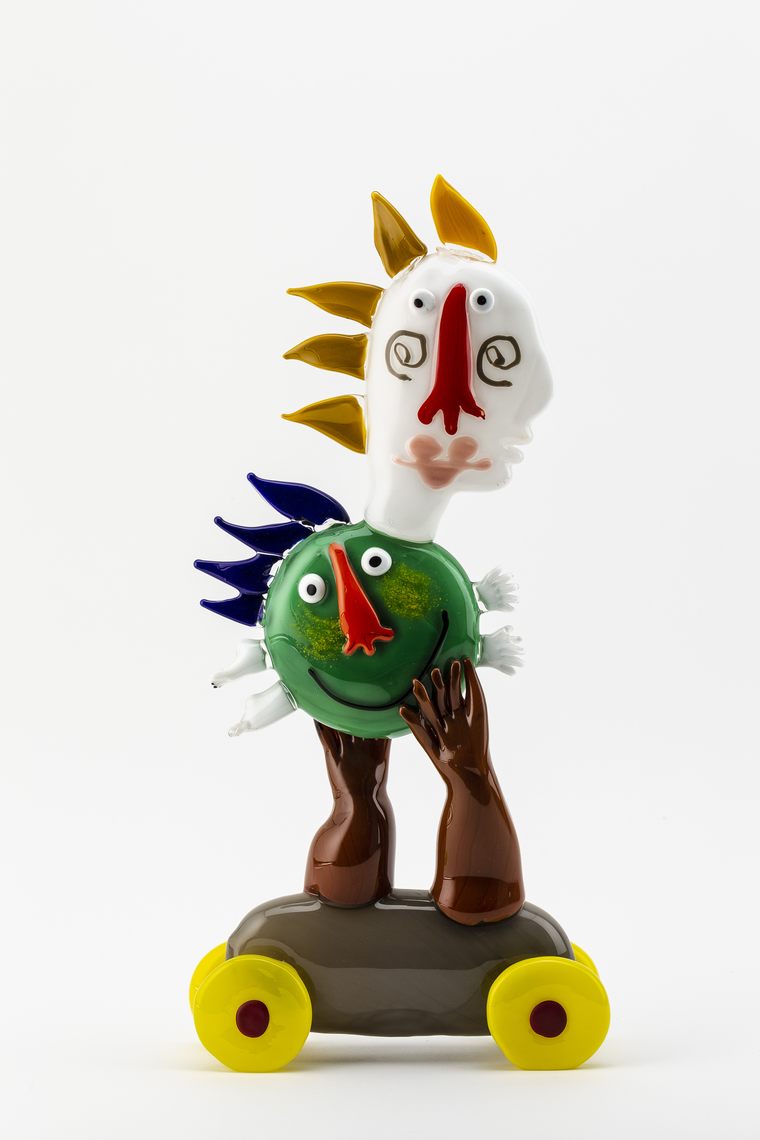
.jpg)

.jpg)
Testen Sie LotSearch und seine Premium-Features 7 Tage - ohne Kosten!
Lassen Sie sich automatisch über neue Objekte in kommenden Auktionen benachrichtigen.
Suchauftrag anlegen